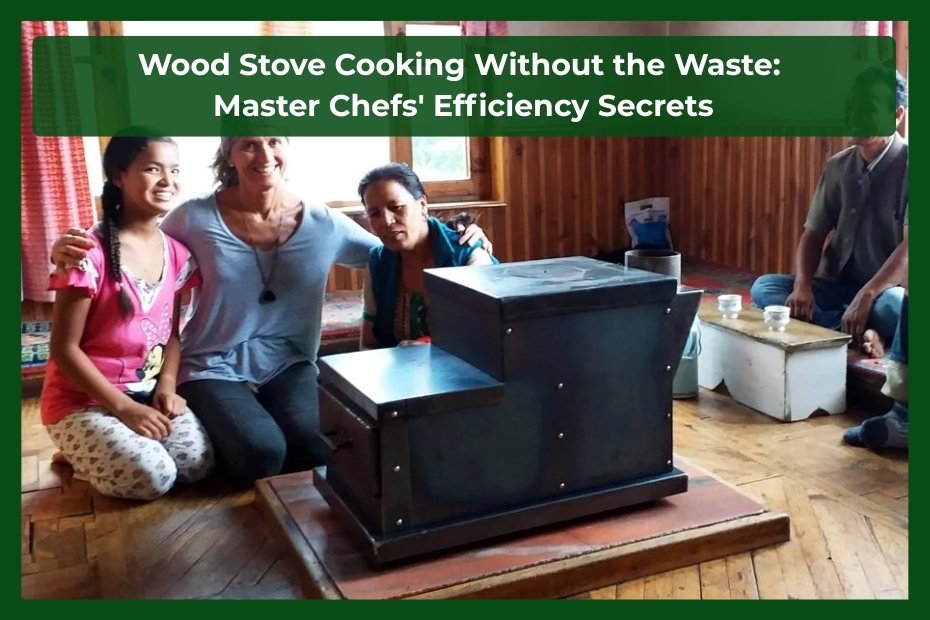In an era where sustainability is at the most considerations and gourmet dishes are top on the list of people’s preferences, cooking with wood has not only turned into a traditional but also an artistic method that combines the triad of characteristics: efficiency, flavor, and eco-friendliness. Great cooks from every continent are reappearing the power of wood cooking but from nowhere near the past ‘smoky’ style—almost no waste and extremely high efficiency.
The Change of Wood Stove Cooking
The past has passed when wood stove cooking was synonymous with getting too much smoke, wasting too much fuel, and heat being too inconsistent. The innovative designs of today, especially the smokeless wood burning stove India has developed, have made cooking technology a quantum leap forward. These modern devices utilize traditional fuel’s power while eliminating the traditional drawbacks of wood cooking that made it impractical for everyday use.
Master chefs who have adopted this method boast of stunning outcomes. The key is not only in the stove but also in knowing how to get the best from every single piece of wood, every BTU of heat, and every minute of the cooking time.
Efficiency Secret #1: Understanding Heat Dynamics
Professional cooks know that the first step to effective wood stove cooking is heat control. In the case of wood, one has to grasp the interaction between the fuel, the air, and the heat produced, while the electric stove allows one just to turn a dial. In this case, the turning point is complete combustion—where wood is completely burned resulting in almost no ash and maximum heat being produced.
The modern clean wood heater technology has made a great impact on this process. The cultivation of the right airflow and the best combustion chamber design has resulted in maximizing the burning of wood at the right temperature, thus, availing intense, even heat while at the same time eliminating smoke or waste gases to almost zero.
Efficiency Secret #2: Fuel Selection Matters
Great cooks are very choosy regarding their wood, that is why they have good reason. Certain woods have different burning temperatures and create different tastes. Nevertheless, the efficiency revolution is mainly attributed to well-seasoned wood or switching to wood pellets for stoves where the temperature is controlled uniformly.
There are several benefits of using wood pellets; they are made from sawdust that is compressed (i.e. recycling what would otherwise be waste), they are very clean in burning and they give out heat that is predictable and controllable. The trend in many professional kitchens is to have both traditional wood and pellets available, the choice depending on the specific cooking task.
Efficiency Secret #3: Rocket Stove Principle
The rocket stove’s principle is to be the world’s most efficient wood-burning stoves. This technique has been used to come up with a very powerful system of the Himalayan Rocket Stove type, which pops up in everything that fuel is completely burnt and directs heat exactly where it is required. The elite chefs know that this design has no fuel waste at all. The stove of a good designer can prepare a complete meal while consuming only a small fraction of the wood used by the traditional stove; thus, it is both cost-efficient and friendly to the environment.
Efficiency Secret #4: Sequential Cooking Techniques
Professional cooks will very carefully plan their sequence of cooking in order to make the least energy use in their cooking. They begin with high-heat cooking when the fire is at its hottest and then move on to slow cooking as the heat gradually goes down. Thus, no heat energy is wasted from the fire, and one method overlaps the other. Some chefs even carry over unused heat from cooking to the next preparatory process, such as getting herbs ready for drying, warming serving plates, or even chopping vegetables for the next meal. Each bit of energy from the wood is used intentionally.
Efficiency Secret #5: Proper Maintenance and Airflow
The Cean wood heater is not just a concern of emissions—it is an issue of performance. The best chefs keep their wood stoves in the best condition, knowing that a clean burning chamber and an air intake set right are the keys to cooking with efficiency rather than waste.
Cleaning regularly means that no ash will accumulate that could obstruct airflow, and the air intake will be adjusted to allow burning to be complete. These are but a few of the very basic practices that can lead to fuel savings of up to 40% as compared to the situation of neglect of maintenance.
The Environmental Impact
One of the most persuasive arguments in favor of the wood stove cooking of master chefs is the low impact on the environment. With the use of modern smokeless wood burning stove India technology and following the right practices, wood-burning is smelly-free and hence carbon-neutral and sustainable.
The use of wood, a renewable resource, is considered to have no more impact on the environment than the conventional cooking methods when done in an advanced stove by burning efficiently. The fact is the complete combustion and sustainably sourced fuel play the game here.
Conclusion
Wood stove cooking with no waste at all is not only possible but also the future of sustainable culinary practice. The combination of traditional wisdom and modern technology such as wood pellet stoves and rocket stove principles is the way chefs today are showing that efficiency and excellence are inseparable. Wood stove cooking can be transformed into exceptional results with these efficiency secrets, and therefore the environment can be honored with the responsibility that comes with it, be you a professional chef or home cooking enthusiast.


Recent Comments